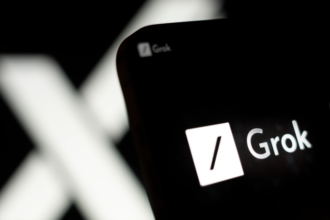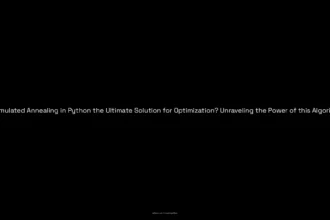Is the future of academic integrity resting on the shoulders of AI detection tools? As educators grapple with the rise of generative technology, two contenders have emerged in the arena: GPTZero and Turnitin. Both claim impressive accuracy rates in differentiating between human and machine-generated content, but they’re tackling this challenge from different angles.
In a world where creativity and originality are paramount, understanding how accurately each system performs can be the difference between a passing grade and an ethical dilemma. Join us as we dive into this fascinating comparison, shedding light on which tool truly stands out in the quest for authenticity.
Table of Contents
ToggleHow accurate is GPTZero compared to Turnitin?
When it comes to the accuracy of GPTZero compared to Turnitin, both tools stand tall but serve slightly different purposes. GPTZero claims an impressive 99% accuracy rate in detecting AI-generated content, paired with a remarkably low 1% false positive rate when differentiating between AI and human samples. On the flip side, Turnitin maintains a solid 98% accuracy rate in identifying content generated by systems like ChatGPT, including those instances where the text has been paraphrased or cleverly rewritten.
Although both systems excel in their respective domains of accuracy, what truly distinguishes them is their underlying philosophies.
GPTZero emphasizes nurturing understanding and encourages collaboration among students. Its design prioritizes educational growth over merely policing integrity, creating an environment where learners feel supported in their writing journeys.
In contrast, Turnitin tends toward a more punitive framework, primarily aimed at recognizing violations of academic honesty rather than fostering an appreciation for authentic scholarship.
Ultimately, each tool has its strengths and weaknesses depending on the context in which they’re utilized.
For instance, while educators might appreciate Turnitin’s legacy and authority within academic institutions, students could find value in GPTZero’s user-friendly interface that encourages exploration without the fear of immediate repercussion.
This intricacy brings into focus a larger question—how can we strike a balance between upholding academic integrity and fostering an environment that nurtures creativity and growth? It’s essential to consider not just whether a tool is accurate but also the broader impact it has on students’ learning experiences.
How does GPTZero’s accuracy compare to Turnitin’s?
GPTZero and Turnitin are both AI detection tools, but they approach the task with different philosophies. GPTZero focuses on transparency and collaboration, while Turnitin leans towards identifying plagiarism and deterring academic dishonesty. Think of it like this: GPTZero is more like a friendly collaborator, while Turnitin is like a vigilant security guard.
Both tools have their strengths and weaknesses. GPTZero boasts a slightly higher accuracy rate (99%) compared to Turnitin (98%). This means that GPTZero is slightly better at identifying AI-generated content. However, Turnitin is a more established tool that has been used by educators for years. It’s also widely recognized and trusted by students and teachers alike.
Ultimately, the best tool for you depends on your specific needs. If you’re looking for a tool that can help you understand AI-generated content and avoid plagiarism, GPTZero is a great option. However, if you need a tool that can help you identify plagiarism and deter academic dishonesty, Turnitin is a better choice.
What are the key takeaways from comparing GPTZero and Turnitin?
When delving into the comparison between GPTZero and Turnitin, there are several key takeaways that emerge, shedding light on the unique strengths and weaknesses of each tool.
Firstly, GPTZero is designed with the user experience in mind, presenting a strikingly intuitive and accessible interface. This approach makes it incredibly efficient for students and educators alike, fostering a spirit of understanding and collaboration rather than merely serving as a gatekeeper.
One of the most compelling features of GPTZero is its high accuracy in detecting AI-generated content without resorting to punitive measures.
This fosters an environment where learning and exploration can thrive. In contrast, Turnitin carries the reputation of being a cornerstone in educational institutions worldwide; however, it often leans heavily towards a compliance-focused mindset.
Its effectiveness shines in accurately identifying instances of AI-written work, especially when it comes to nuanced cases like paraphrasing or rewriting.
Moreover, Turnitin excels in providing educators with a broad array of features and resources aimed at maintaining academic integrity—making it an invaluable asset for institutions looking to uphold their standards.
Although Turnitin may be considered more robust from an educational resource perspective, its complexity can alienate students who lack direct access without teacher intervention.
Ultimately, the choice between GPTZero and Turnitin doesn’t merely hinge on performance metrics but rather reflects a philosophical difference in approach toward education technology.
While Turnitin emphasizes surveillance of academic honesty, GPTZero invites users into a learning dialogue, encouraging exploration rather than warding off potential misconduct.
Therefore, selecting the right tool depends on individual needs: whether you value comprehensive resources for educators or prioritize accessibility and collaborative learning experiences.
Which AI detector is closest to Turnitin in terms of accuracy?
It’s a tough call, but if you’re looking for the closest thing to Turnitin in terms of accuracy, you’ll want to look at PlagScan, Copyleaks, Grammarly, GLTR, and Originality.AI These tools offer comparable accuracy levels and various features, making them viable alternatives to Turnitin.
While GPTZero boasts a user-friendly interface and a high accuracy rate, it’s not quite on par with Turnitin when it comes to identifying AI-generated content. Think of it this way: Turnitin is the seasoned veteran, having established itself as a gold standard in academic circles. It’s like a seasoned detective with years of experience, able to sniff out even the most cleverly disguised AI-generated content.
The other AI detectors I mentioned offer a similar level of sophistication, each with its own strengths and weaknesses.
For example, PlagScan is known for its comprehensive plagiarism detection, while Copyleaks is renowned for its speed and ease of use. Grammarly is a fantastic tool for catching grammatical errors, but it also has a built-in plagiarism checker.
GLTR is a powerful tool for analyzing text and identifying potential AI-generated content, and Originality.AI is another option that offers a high level of accuracy.
Ultimately, the best AI detector for you will depend on your specific needs and preferences. Do you prioritize a user-friendly interface? Do you need a tool that can handle large amounts of text? Do you want a tool that can identify plagiarism and check for grammatical errors? Once you know your priorities, you can start narrowing down your options and find the best AI detector for your needs.





